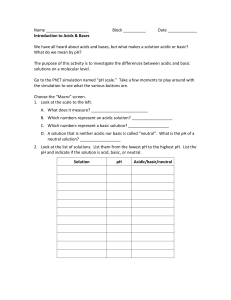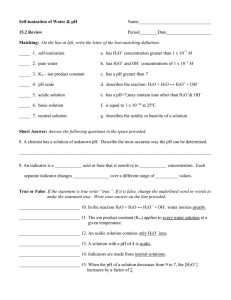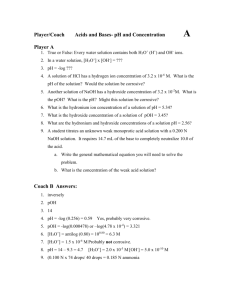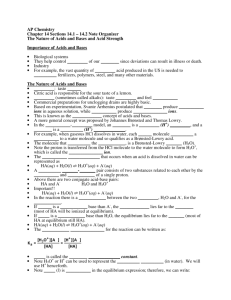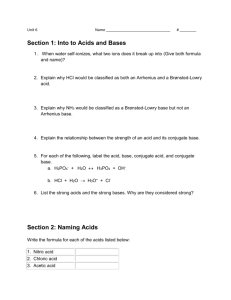Acid / Base Equilibria
advertisement
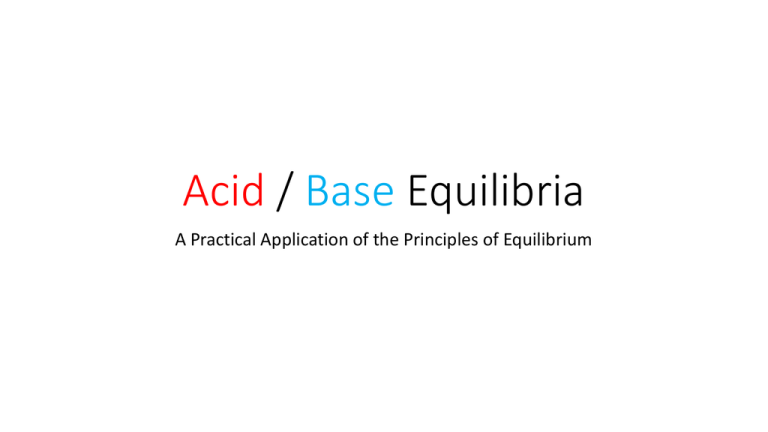
Acid / Base Equilibria A Practical Application of the Principles of Equilibrium Water is always in equilibrium with its ions: • 2H2O(l) H3O+(aq) + OH-(aq) • KW = [H3O+] [OH-] = 1.0 x 10-14 (numeric value applies at 25 oC) • What are the ion concentrations in pure water at equilibrium at 25 oC? Solving the Equilibrium Equation for Water The Concept of pH and pOH • pH = - log [H3O+] • pOH = - log [OH-] • In pure water at 25 oC, we have the following: • pH = - log (1.0 x 10-7) = 7.00 • pOH = - log (1.0 x 10-7) = 7.00 • Pure water is neutral in an acid / base sense, because the concentrations of H3O+ and OH- are equal. • At 25 oC, a value of 7.00 is neutral on both the pH and pOH scales. The Conditions in Acidic, Basic, and Neutral Solutions • Acidic: [H3O+] > [OH-] • Basic: [OH-] > [H3O+] • Neutral: [H3O+] = [OH-] • ANY aqueous solution will contain BOTH H3O+ ions and OH- ions. Whether the solution is acidic, basic, or neutral depends on which ion (if either) predominates. Reaction of a Strong Acid with Water Dissolving a Water-soluble Hydroxide Compound in Water Reaction of a Weak Acid with Water Reaction of a Weak Base with Water The Hydrolysis of an Acidic Salt Finding the Missing Ka Value The Hydrolysis of a Basic Salt

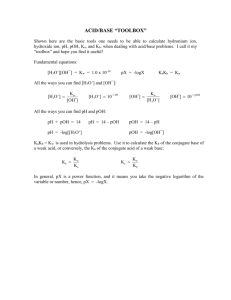
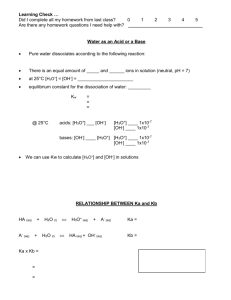
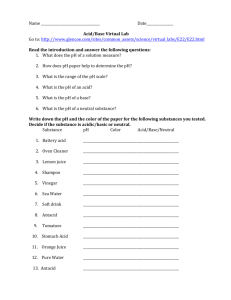
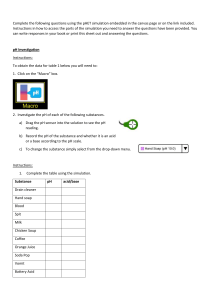
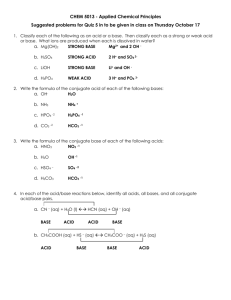
![pH = -log [H 3 O + ] pOH](http://s3.studylib.net/store/data/009623797_1-fb12d55980dd0a8b24e53140fd1c2f0b-300x300.png)
